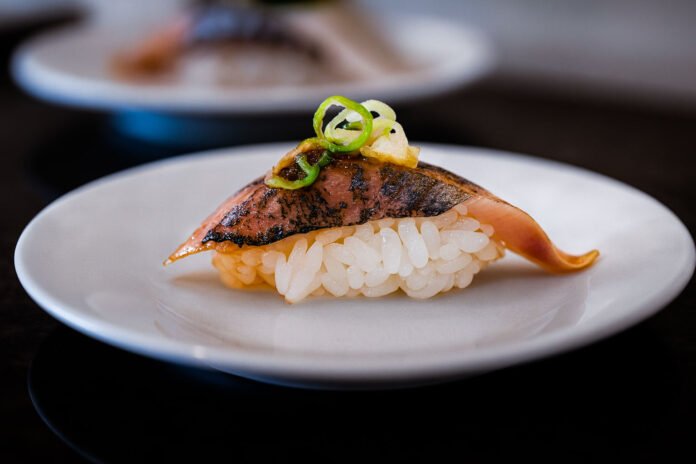Part of what makes Kihon underrated was its always-from-the-beginning refusal to follow the Long Beach script for sushi. As it prepares to take over the space westwardly, providing patrons with a more contemporary aesthetic, the story of Kihon is worthy of extolling.
For decades, the city’s sushi scene has catered heavily toward volume and good ol’ American taste in sushi. Cambodian- and Thai-tinged, giant menus padded with deep-fried rolls, sauces on sauces, and novelty combinations that favor spectacle over subtlety.
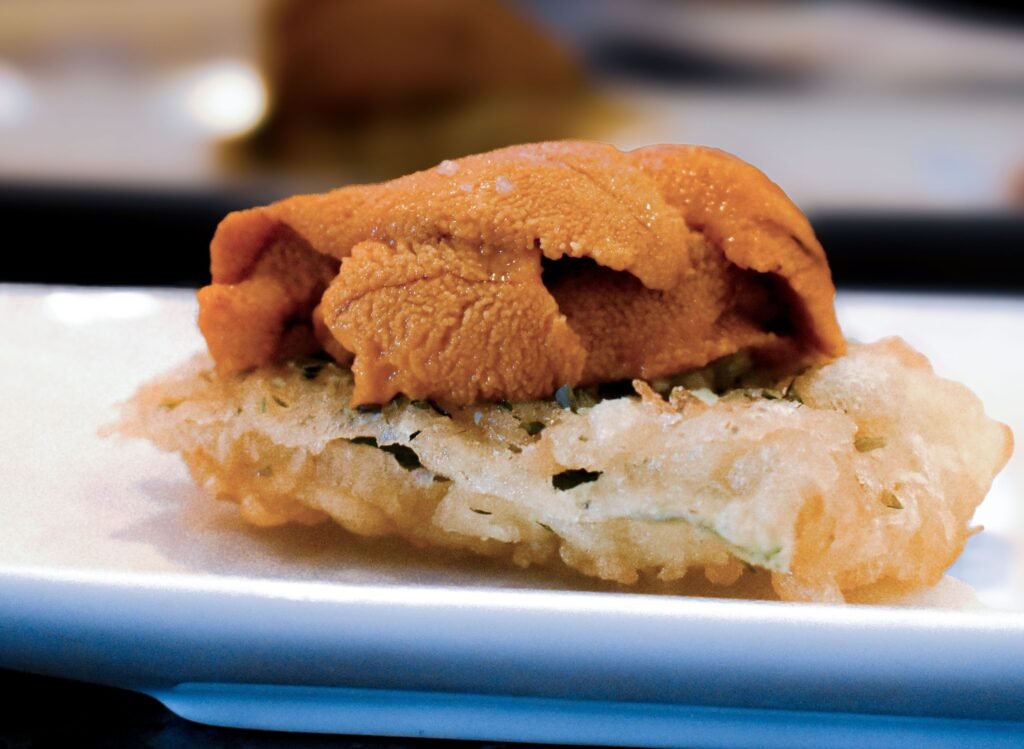
That approach has its place and is loved for a rightful reason. But it also left a gap for diners seeking the purity of traditional sushi, forcing them to go to Koi in Seal Beach and, up until Sushi Beluga opened in DTLB, was solely Kihon when it opened.
Kihon filled that gap with quiet confidence, highlighting pristine nigiri and seasonal fish that need no camouflage. It’s not loud. It’’s not trendy. And that’s exactly why it matters. In a city where flash often wins attention, Kihon has quietly built its reputation on fundamentals, making it one of Long Beach’s most essential, if still unsung, dining spaces.
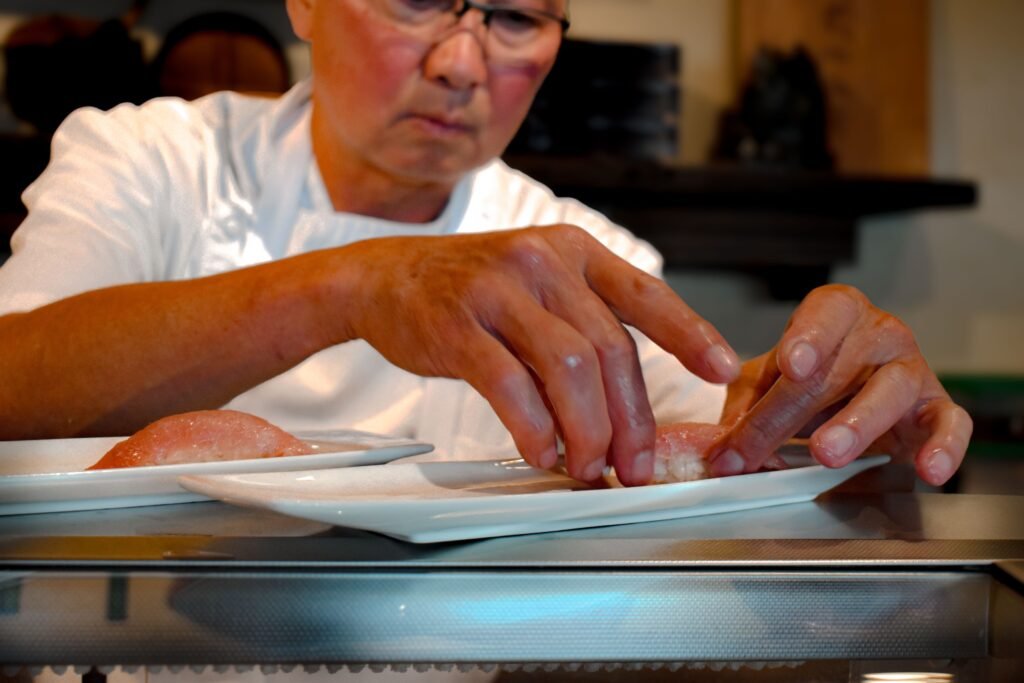
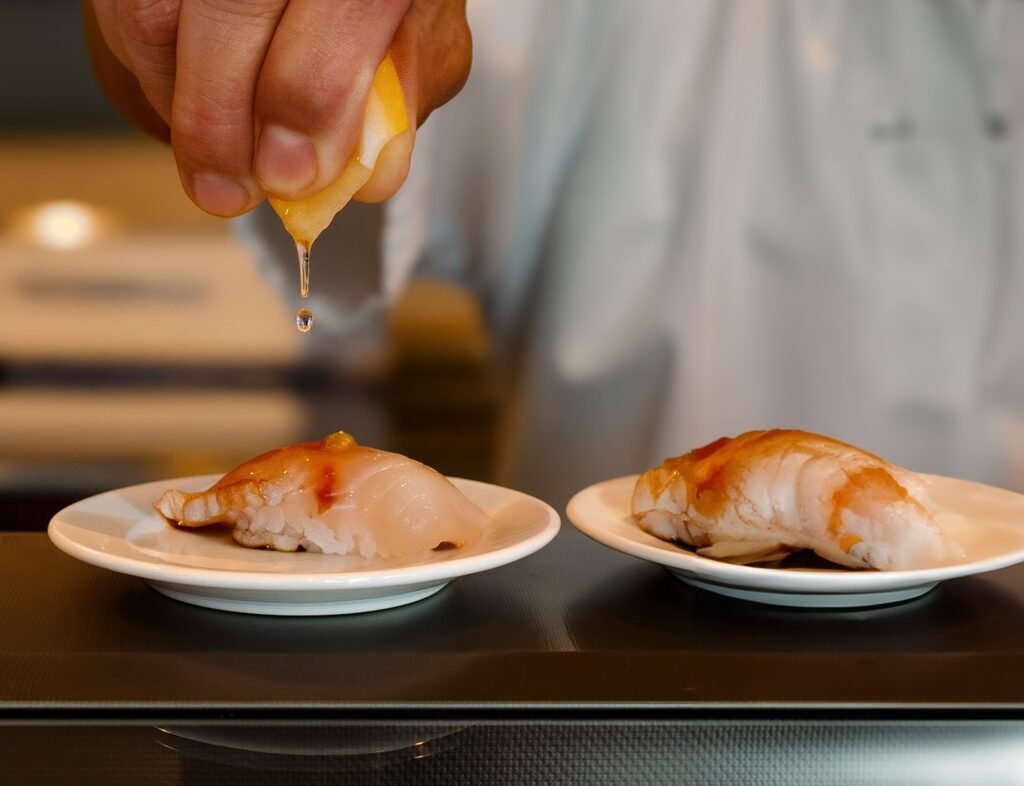
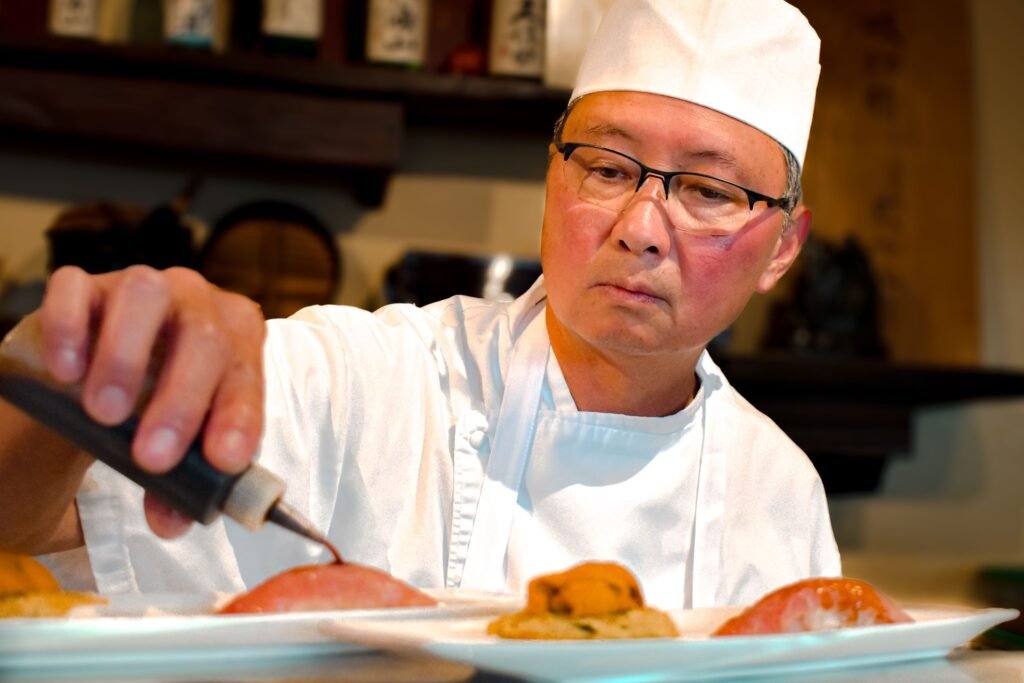
Chef Erwin’s love of sushi appeared out of a recession.
When the 2008 recession pulled the rug out from under tech worker Erwin Angeles, sushi wasn’t the obvious next step. At the time, Angeles was working for CVS’s tech department, helping spin off a start-up with proof-of-concept funding. When the market collapsed, so did the company. He was suddenly jobless.
“My wife said, ‘Why not sushi?’” Angeles recalls. “So I Googled sushi classes, found a professional crash course in L.A.—and it changed everything.”
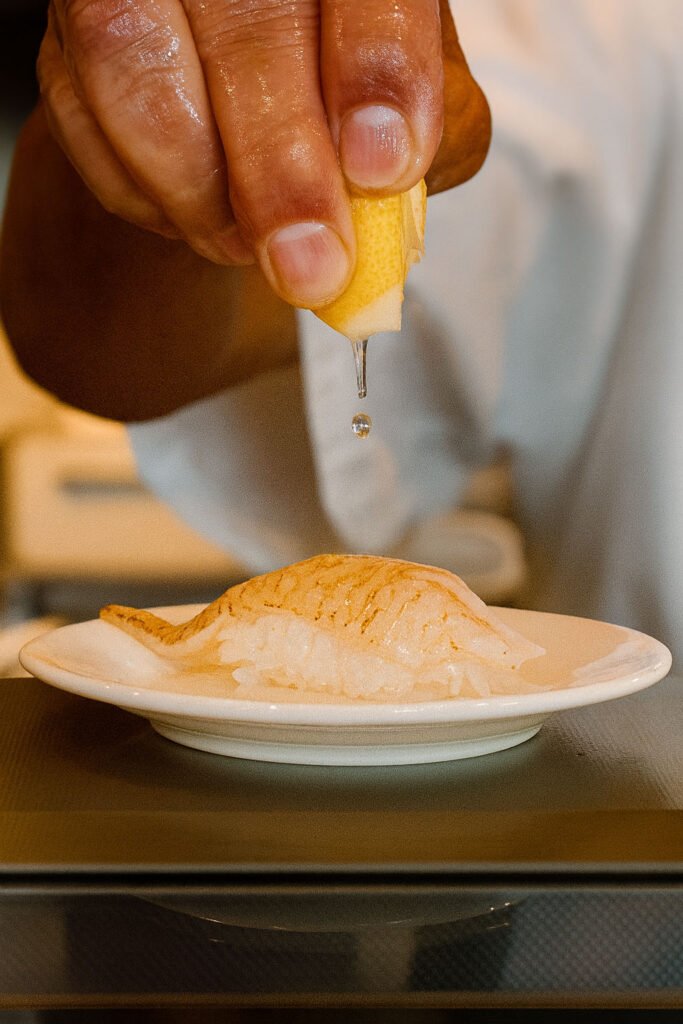
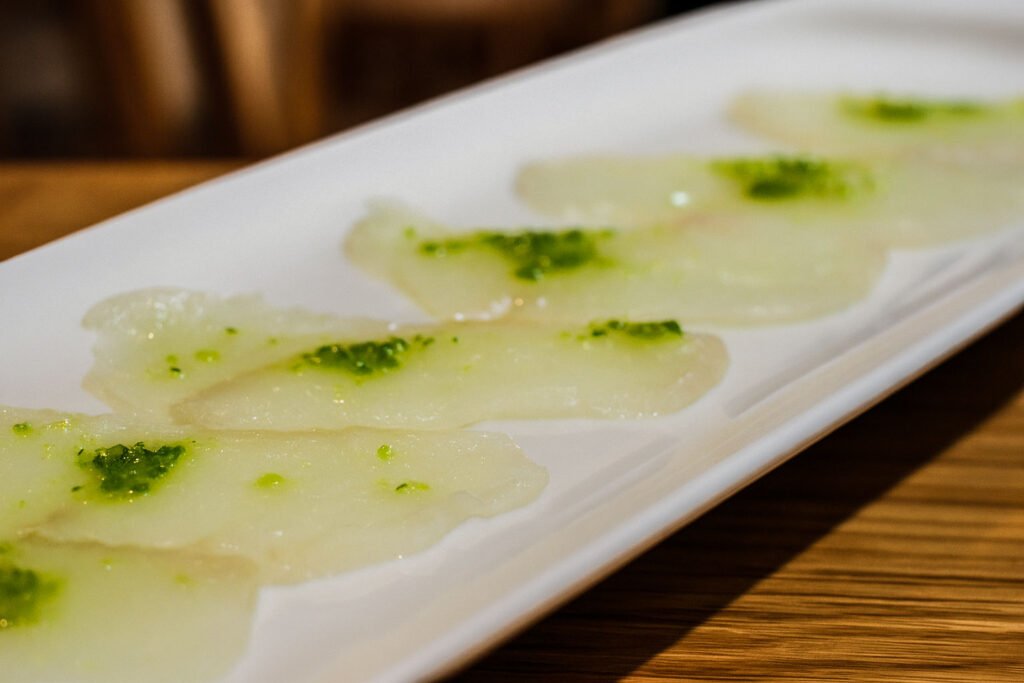
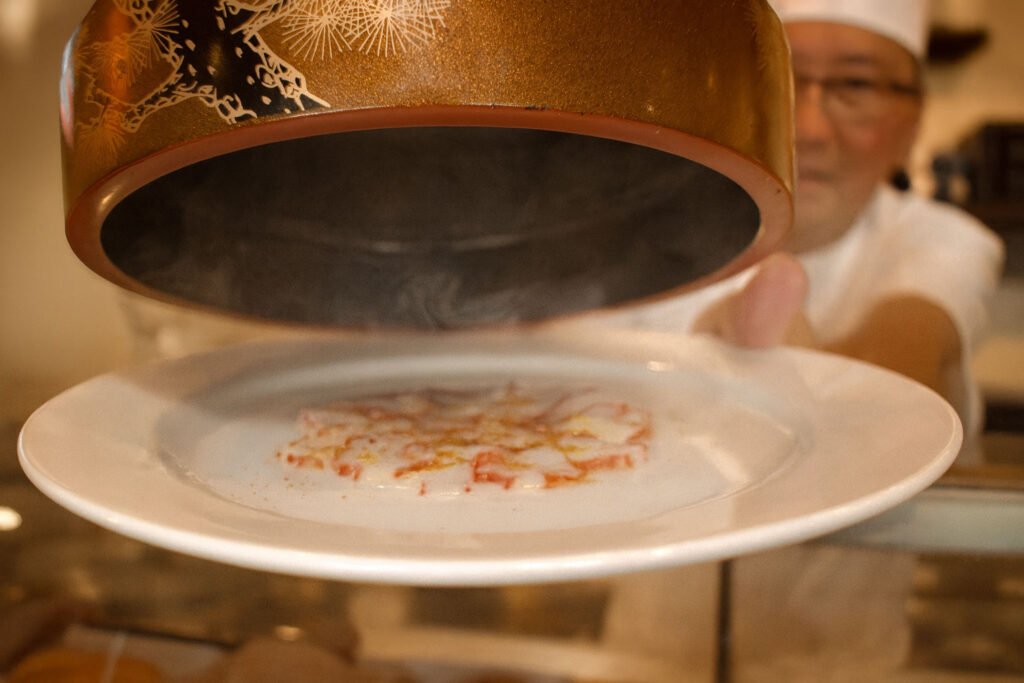
Miyako Sushi & Washoku School, founded by Katsuya Uechi, provides curriculum focused on traditional Japanese cuisine and, even better was in partnership with Mutual Trading Company. (That’s the country’s largest Japanese food importer.) What was meant to be three months rewired his career. Angeles not only completed the program but was asked to teach, spending five years running morning classes while working nights across Chef Garcia’s portfolio of respected sushi bars from Hollywood to Manhattan Beach.
It was there, he says, where he sharpened his knife skills and discipline: “I knew I could be really good in the kitchen. I just had to prove it.”
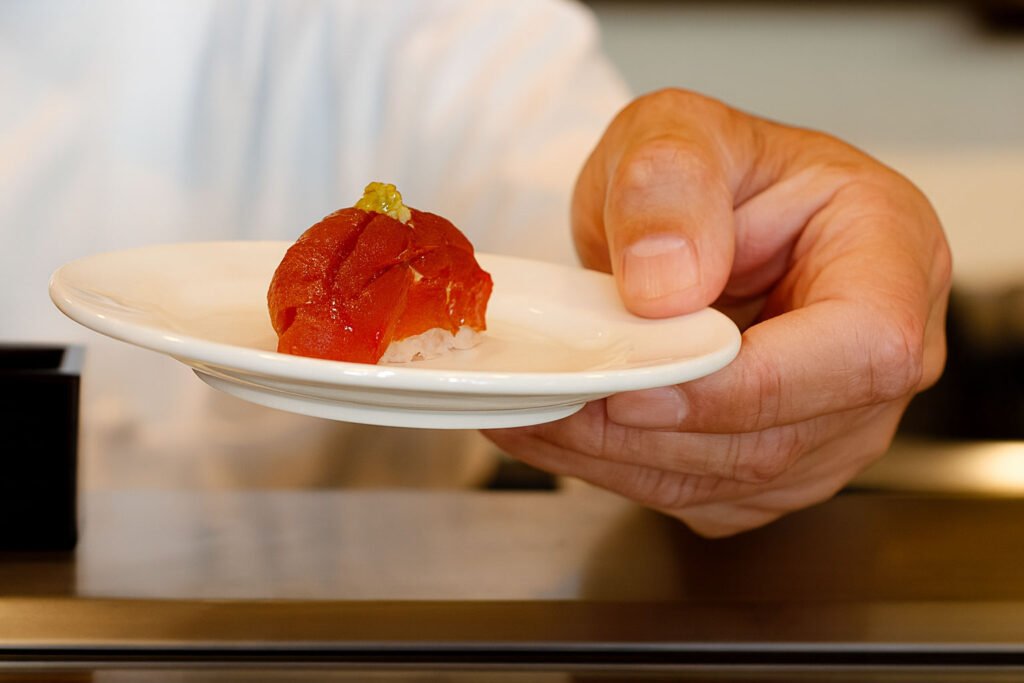

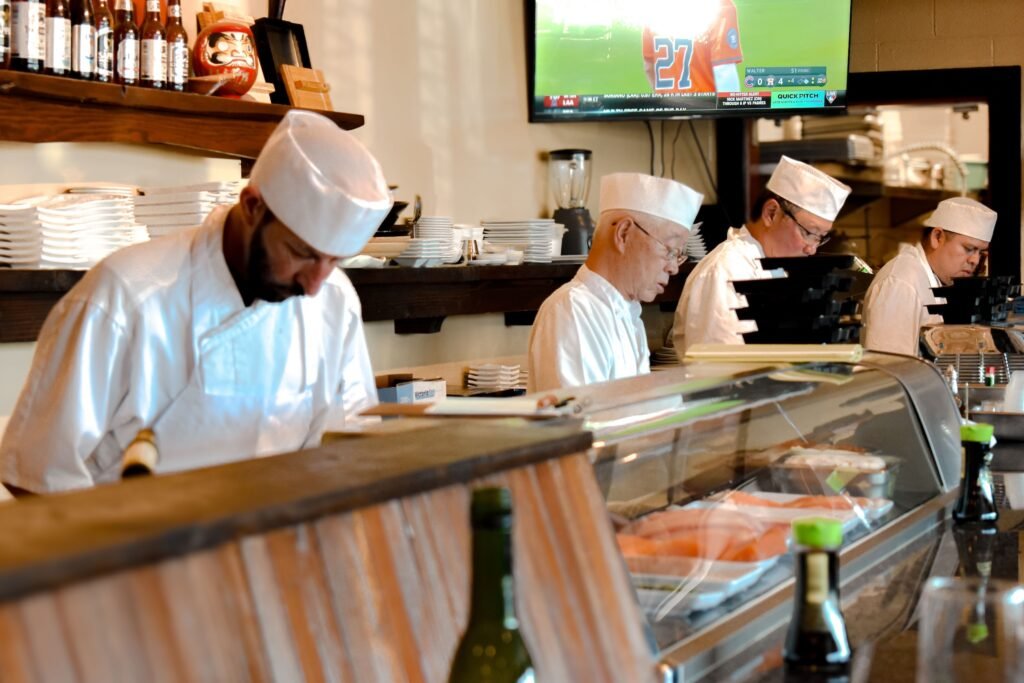
The birth of Kihon in Long Beach’s Naples neighborhood.
By 2014, Angeles was ready to step out on his own. He found a shuttered sushi space on Second Street in Naples—another victim of the recession—and turned it into Kihon, his vision of what Long Beach had been missing: a deeply traditional sushi bar that valued simplicity over spectacle.
While the city was saturated with roll factories and mayonnaise- and eel sauce-laden creations, Kihon doubled down on the opposite. No frills. No 2,000-item menus. Just pristine nigiri. Delicate sashimi. And fish flown in from Japan that spoke for itself. Diners suddenly found themselves tasting buttery cuts of toro, the clean sweetness of scallop, the subtle smoke of seared kampachi—served with restraint and reverence.


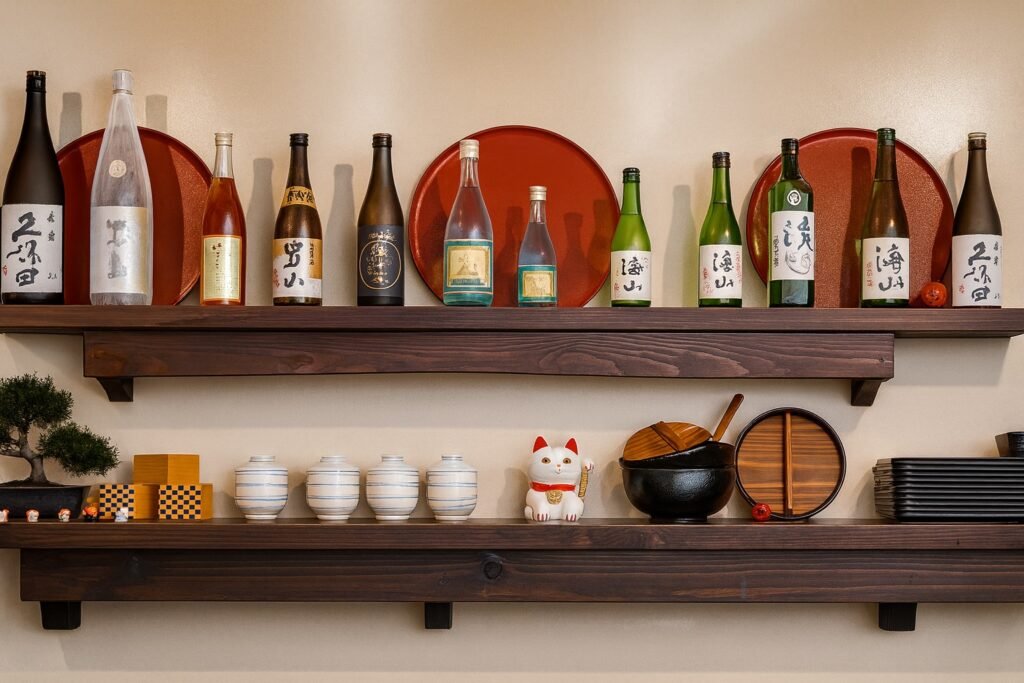
Kihon became a quiet revelation. The dining room, small and intimate, lent itself to hushed focus on the sushi bar, where Angeles worked with surgical precision. Each piece was an essay in balance: rice that was warm but not hot, seasoned with just enough vinegar to lift the fish; slices that were uniform without being mechanical; plating that reminded guests sushi is not decoration but discipline. For a decade, Kihon has attracted purists and adventurous eaters alike—the ones who want to try uni when it’s in season or chase the buttery edge of yellowtail belly when Angeles brings it in.
That loyalty is what fueled Angeles’s current expansion, a project less about square footage and more about gratitude.
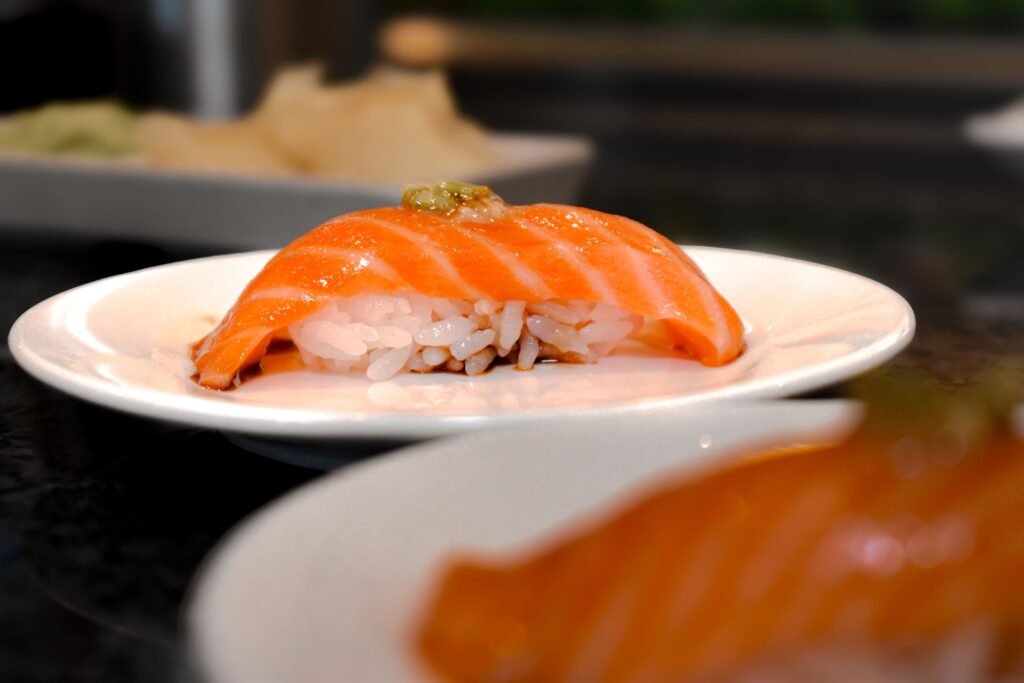
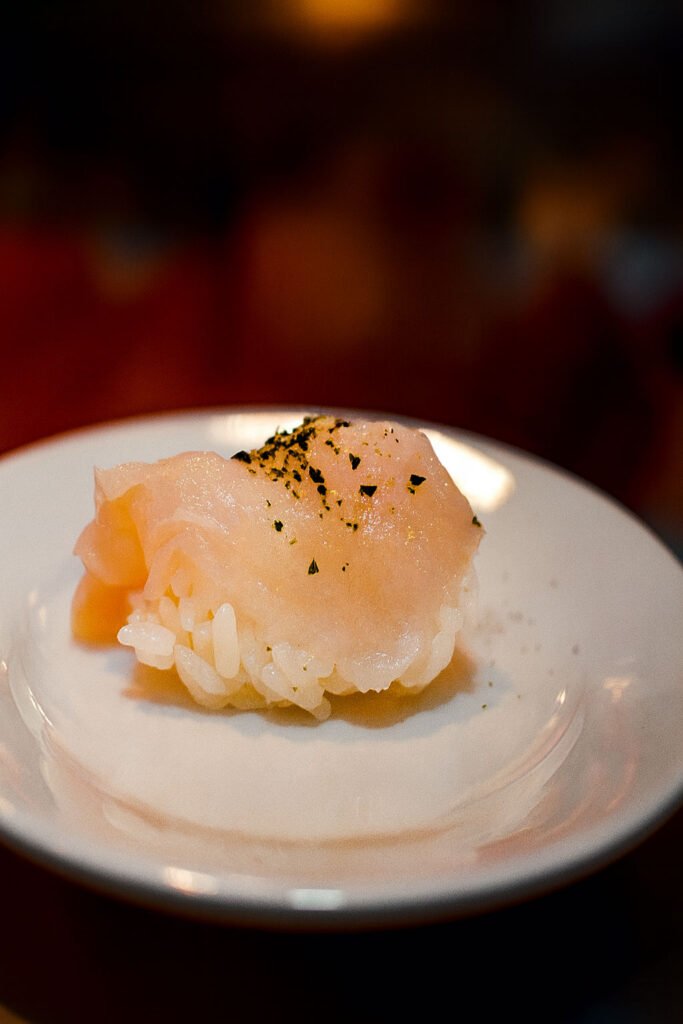
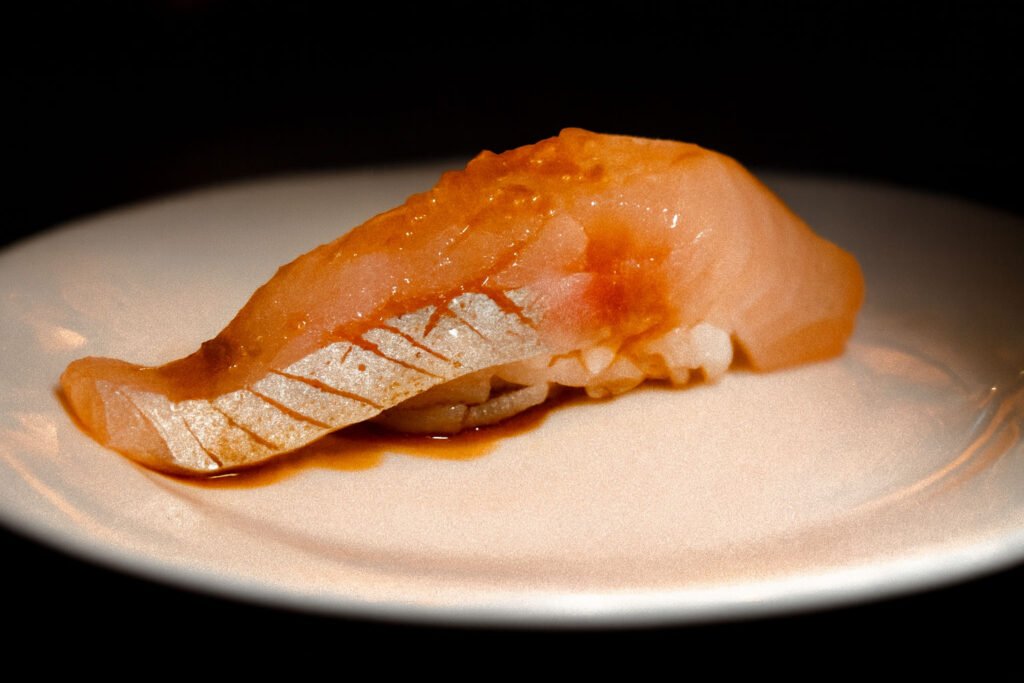
Kihon will expand its ability to operate in Long Beach.
“We’ve been here 11 years. It’s a way to give something back to customers who’ve supported us,” Erwin said. “To show the community we’re here to stay.”
The new buildout—removing walls, revamping the bar, and refreshing the dining area in the empty space just west of the current Kihon—serves as both a facelift and a promise. It’s about reinvigorating the room, giving longtime regulars something new to be excited about while preserving the traditional core that made Kihon special in the first place.
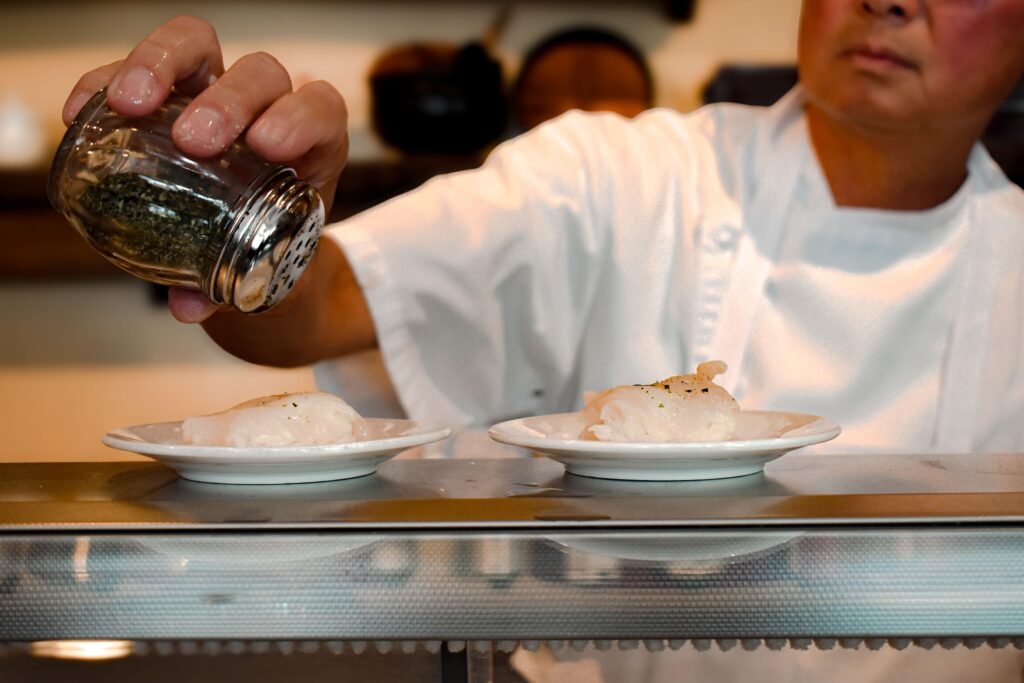

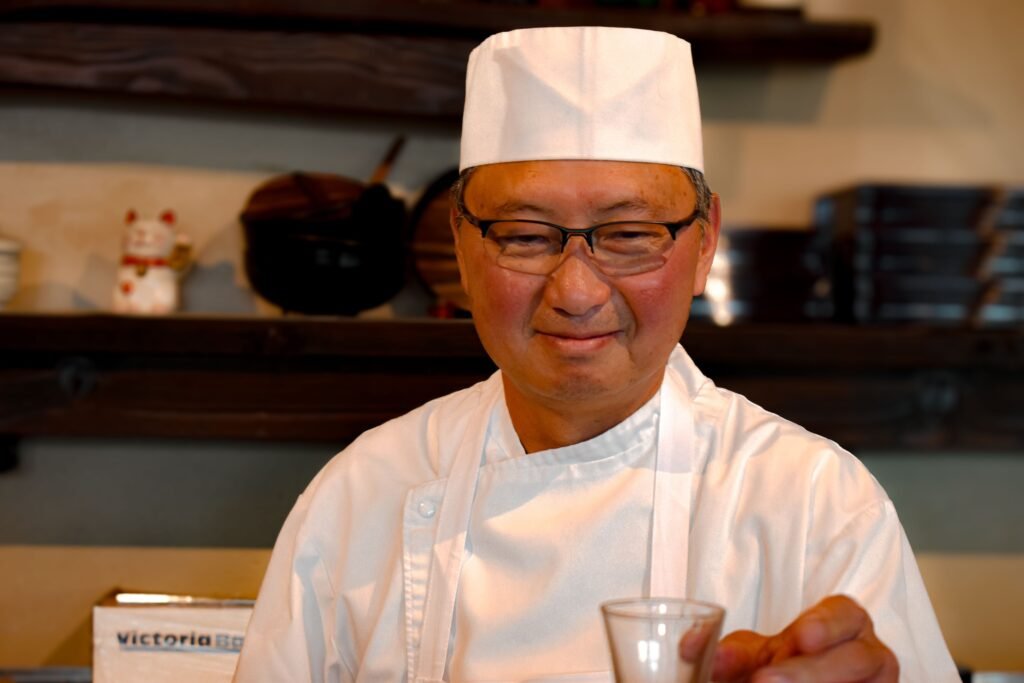
In a city where flash often outweighs fundamentals, Kihon has always been the quiet counterpoint: deliberate, disciplined, and unwaveringly traditional. Angeles’s journey—from a laid-off tech worker with no culinary school pedigree to Long Beach’s most respected sushi chef—is proof that the most unexpected pivots can yield the sharpest results.
For those who know, Kihon isn’t just another sushi bar. It’s the one that taught Long Beach how to slow down and, most importantly, pull up a chair at Chef Erwin’s bar. And hopefully with the ability to have him guide you through an omakase tasting.
Kihon is located at 5662 E. 2nd St.

